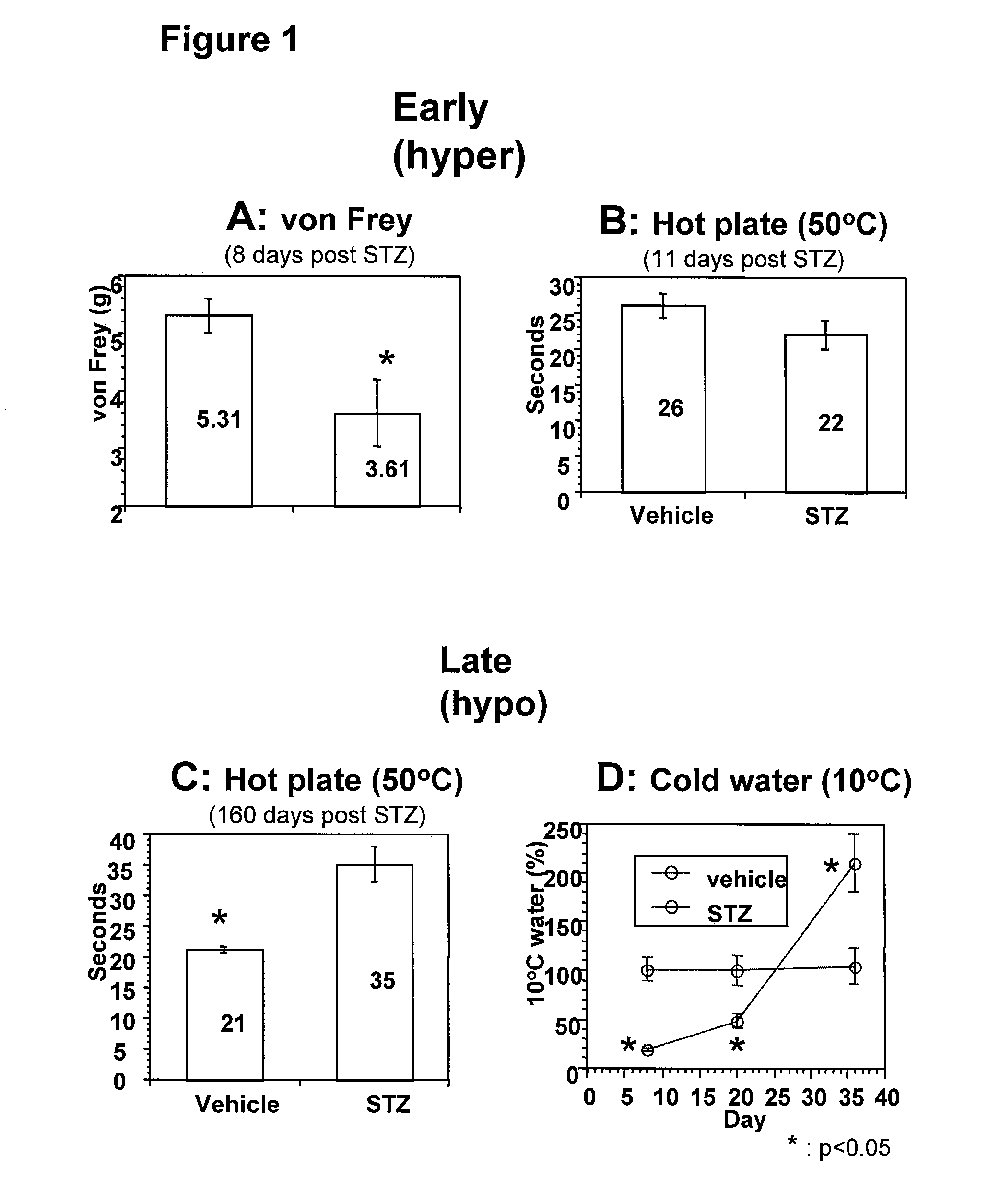Systemic insulin-like growth factor-1 therapy reduces diabetic peripheral neuropathy and improves renal function in diabetic nephropathy
a technology of insulinlike growth factor and peripheral neuropathy, which is applied in the direction of peptides, drug compositions, peptides, etc., can solve the problems of increased insulin need, insufficient insulin need, and inability to ingestion of insulin by oral means, so as to prevent subsequent hyposensitivity, increase or maintain sensory nerve function, and increase muscle mass
- Summary
- Abstract
- Description
- Claims
- Application Information
AI Technical Summary
Benefits of technology
Problems solved by technology
Method used
Image
Examples
examples
[0094]Streptozotocin (STZ), an antibiotic produced by Streptomyces achromogenes, is one of the most widely used diabetes mellitus-inducing agents in experimental animals (described in Like, A. A., and Rossini, A. A. (1976) Streptozotocin-induced pancreatic insulitis: new model of diabetes mellitus. Science 193, 415-417.) In rodent models, streptozotocin (STZ) treatment ablates the insulin producing beta cells of the pancreas and results in a severely diabetic phenotype with DPN as a complication. The animals develop early hyperalgesia followed by hyposensitivity, analogous to patient symptoms.
[0095]DPN animal models were induced with streptozotocin (STZ) treatment. STZ treatment resulted in a severe diabetic phenotype with high blood glucose (>500 mg / dL) and a significant body weight decrease (˜6% weight loss within a week). In this STZ-induced rodent DPN model, two phases of sensory function changes were observed- hyper- and hyposensitive responses. Nerve damage mediates the observ...
PUM
| Property | Measurement | Unit |
|---|---|---|
| temperature | aaaaa | aaaaa |
| temperature | aaaaa | aaaaa |
| temperature | aaaaa | aaaaa |
Abstract
Description
Claims
Application Information
 Login to View More
Login to View More - R&D
- Intellectual Property
- Life Sciences
- Materials
- Tech Scout
- Unparalleled Data Quality
- Higher Quality Content
- 60% Fewer Hallucinations
Browse by: Latest US Patents, China's latest patents, Technical Efficacy Thesaurus, Application Domain, Technology Topic, Popular Technical Reports.
© 2025 PatSnap. All rights reserved.Legal|Privacy policy|Modern Slavery Act Transparency Statement|Sitemap|About US| Contact US: help@patsnap.com



